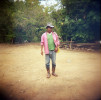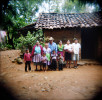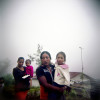Guatemala: Song of the Quetzal
During the height of the civil war, around 1981-82, the Guatemalan military enforced tactics such as "scorched earth campaigns." Soldiers recruited men into civil patrols, raped women and burned villages and churches. This was common throughout the indigenous highlands of the country. There were over 600 massacres. Thousands fled into the mountains to live for over a decade.
Guatemala is the only country in the western hemisphere that experienced genocide in the 20th century. During the country’s 36-year civil war, (1960-1996), about 200,000 people were killed and another 50,000 “disappeared” and buried in mass graves throughout the country. It left a brutal legacy of violence on the social fabric of this highly indigenous country.













